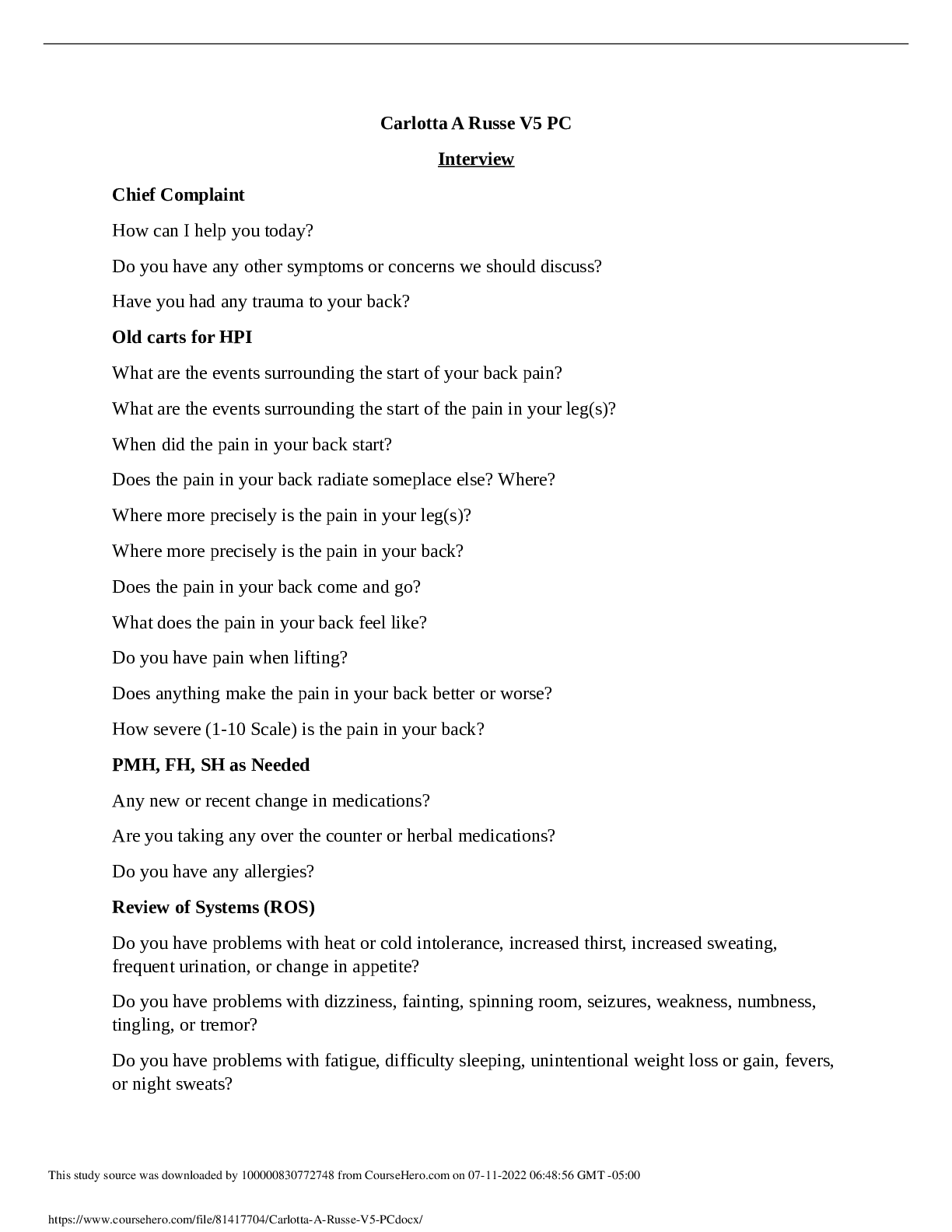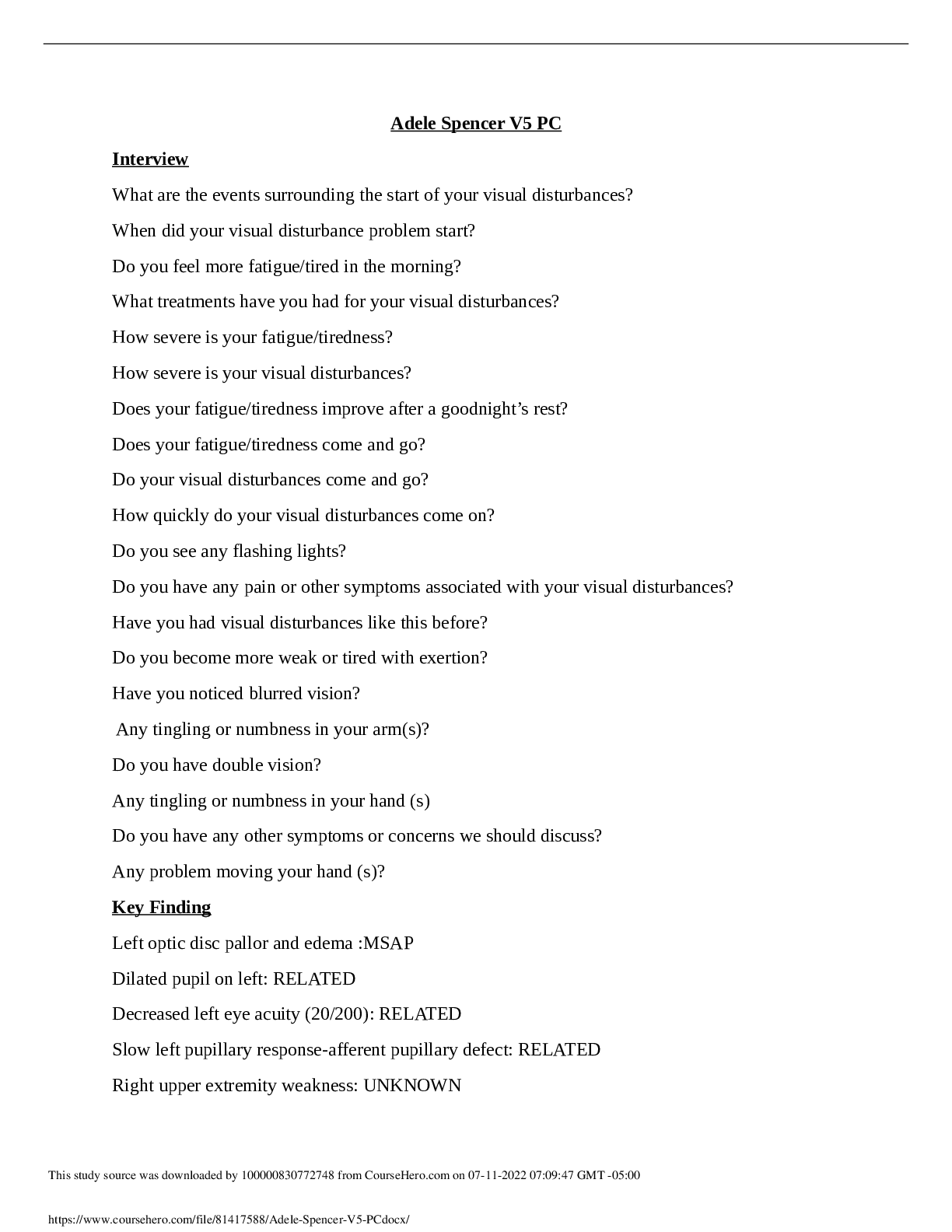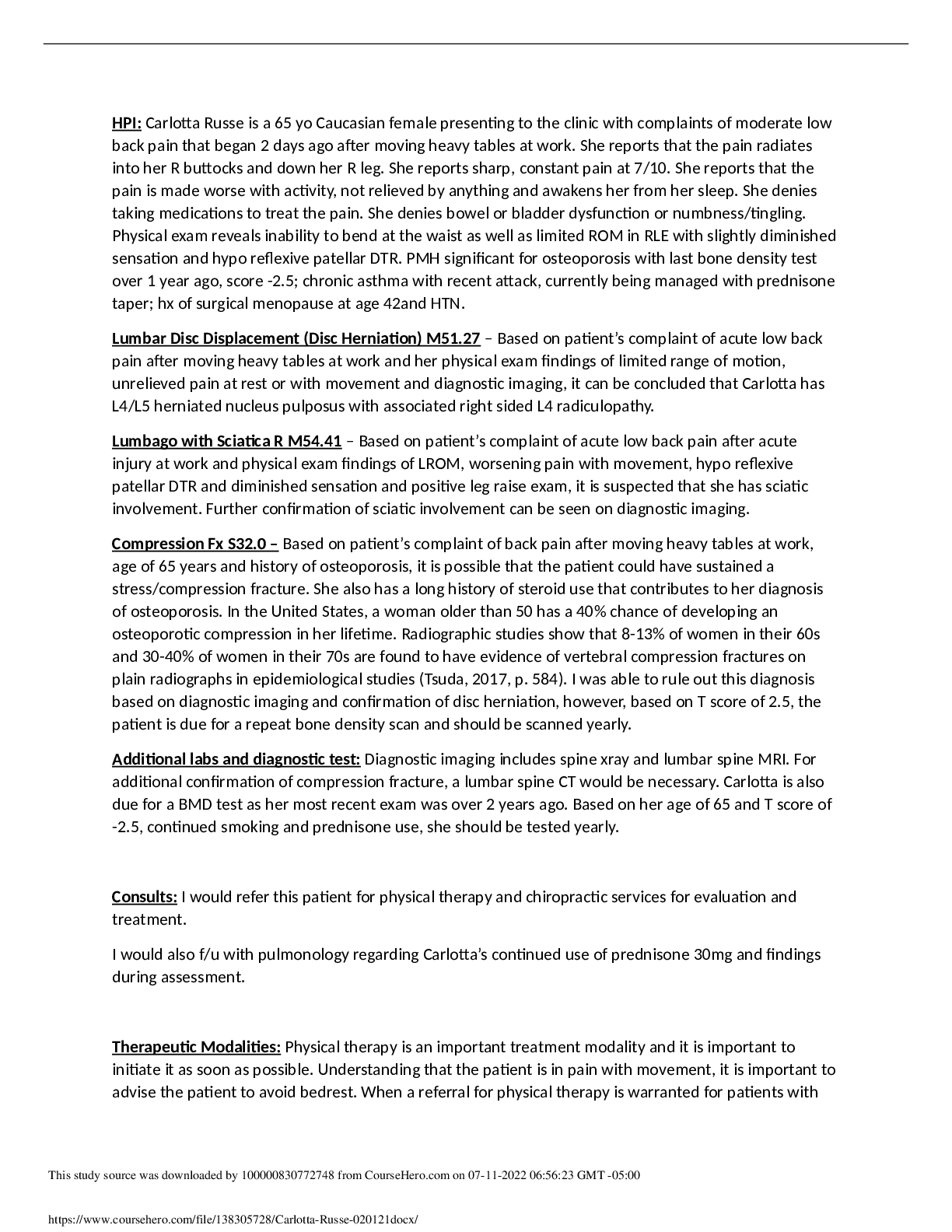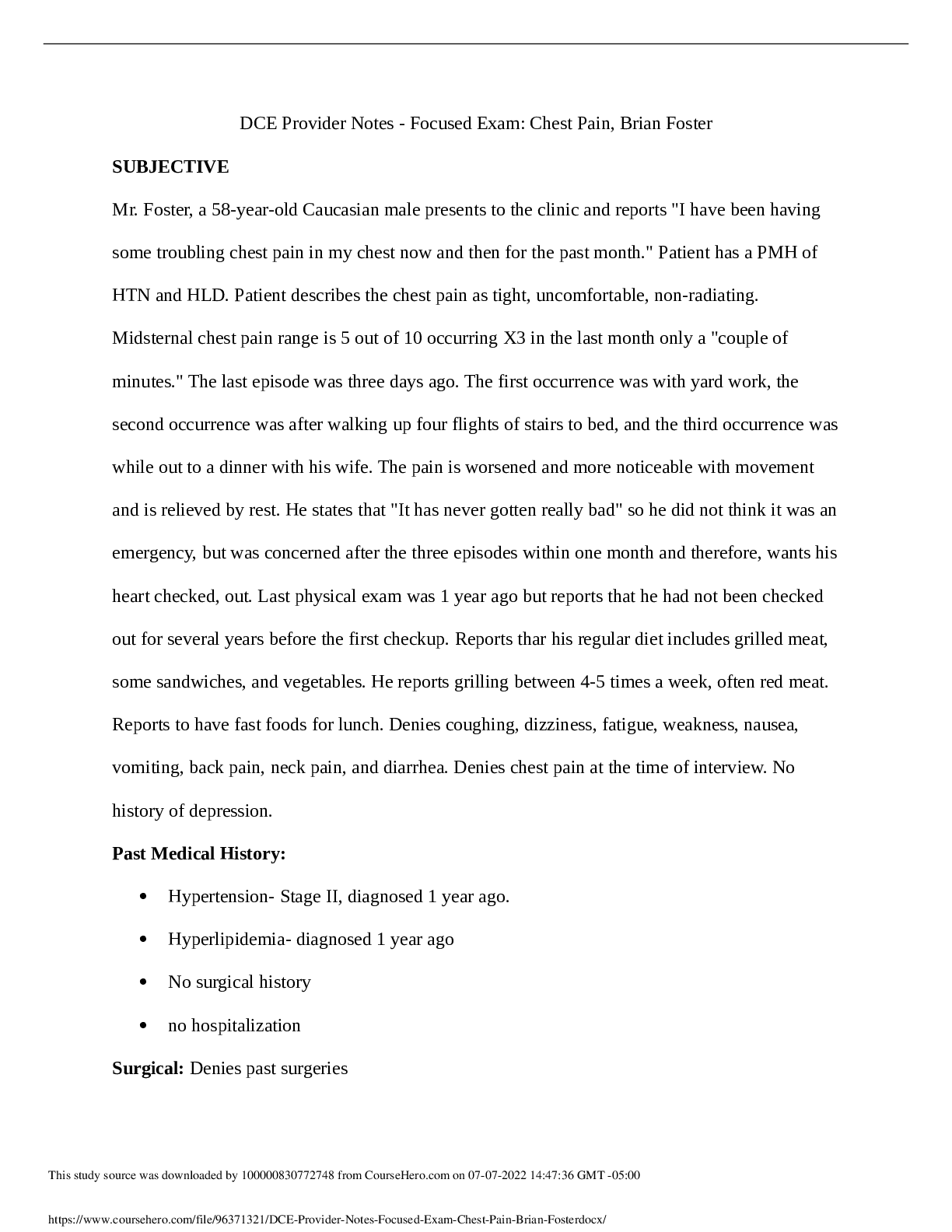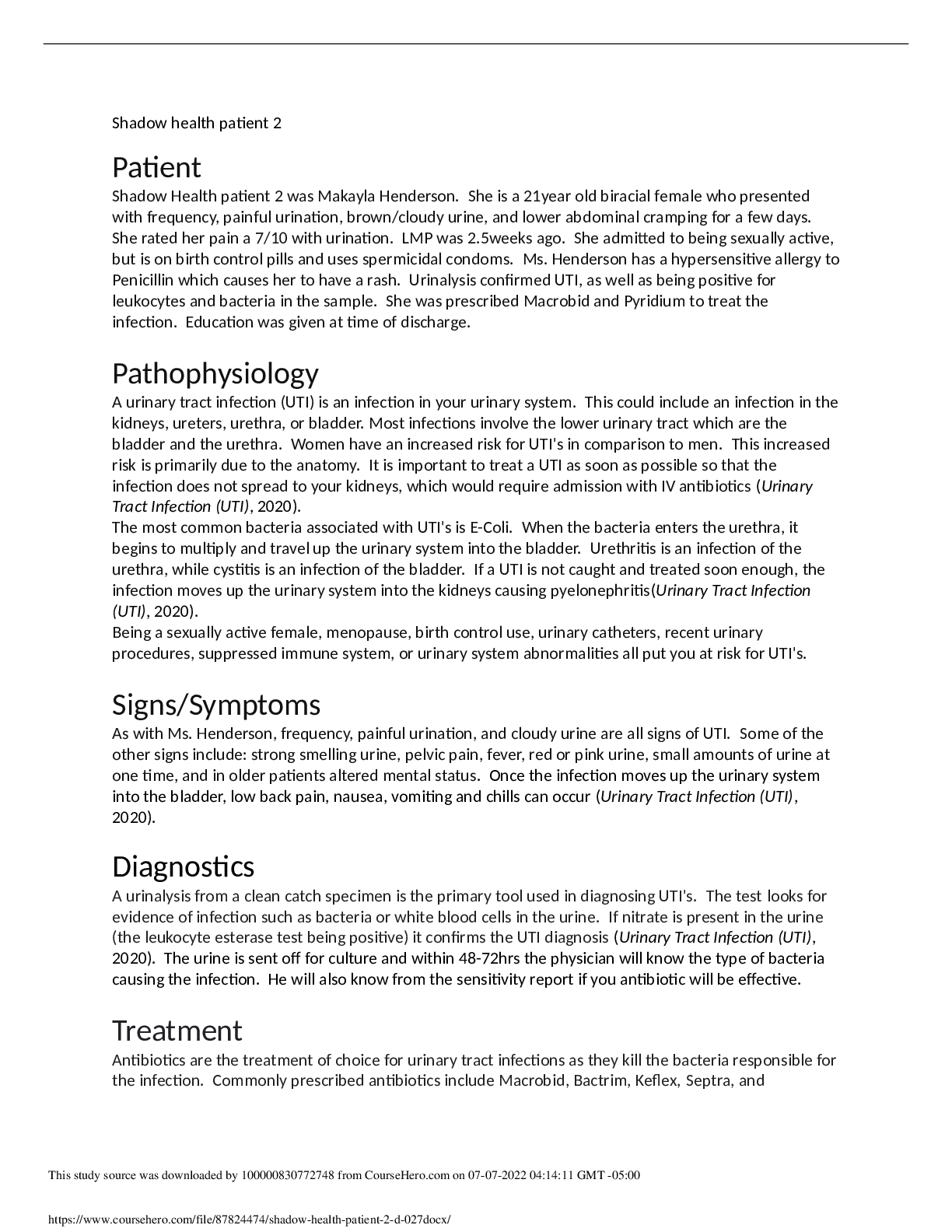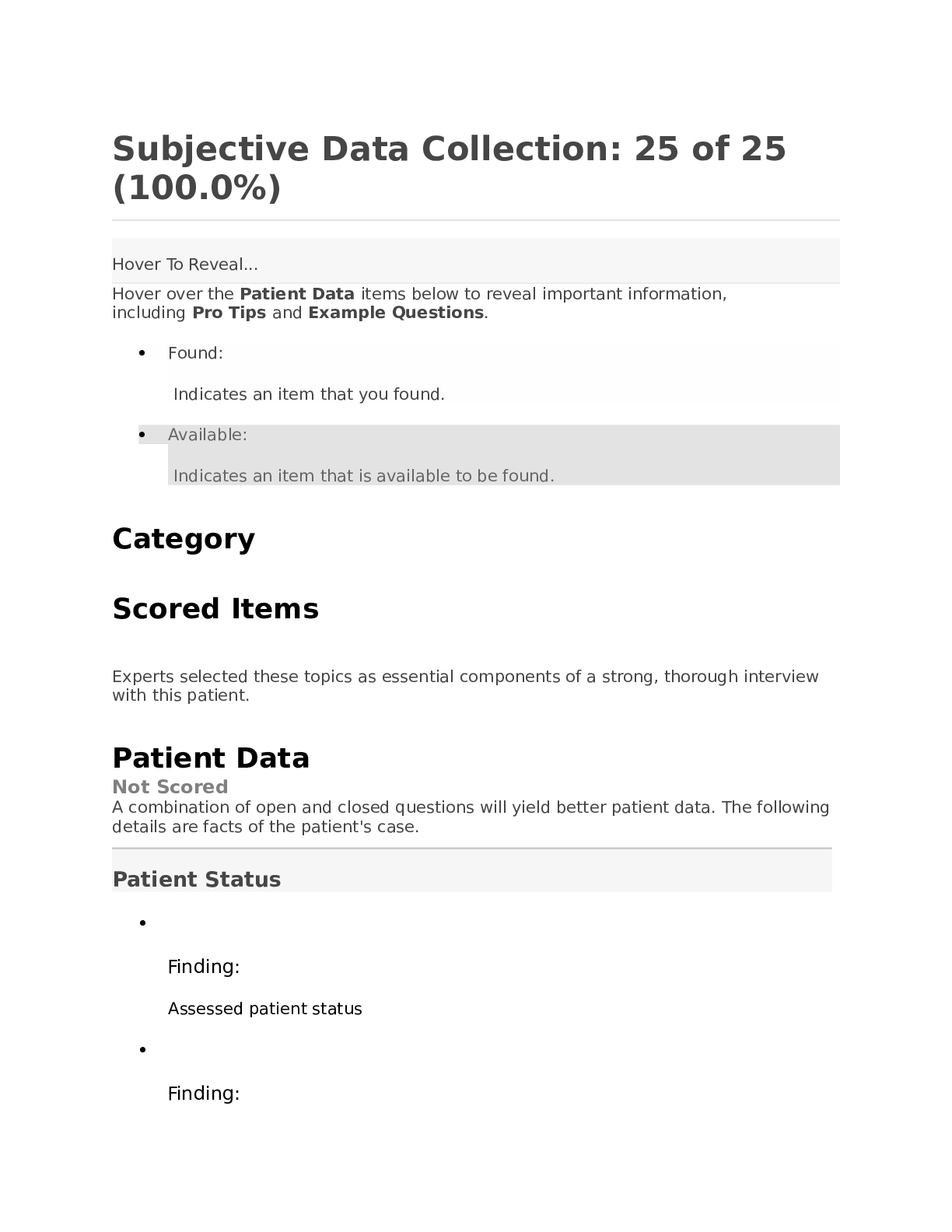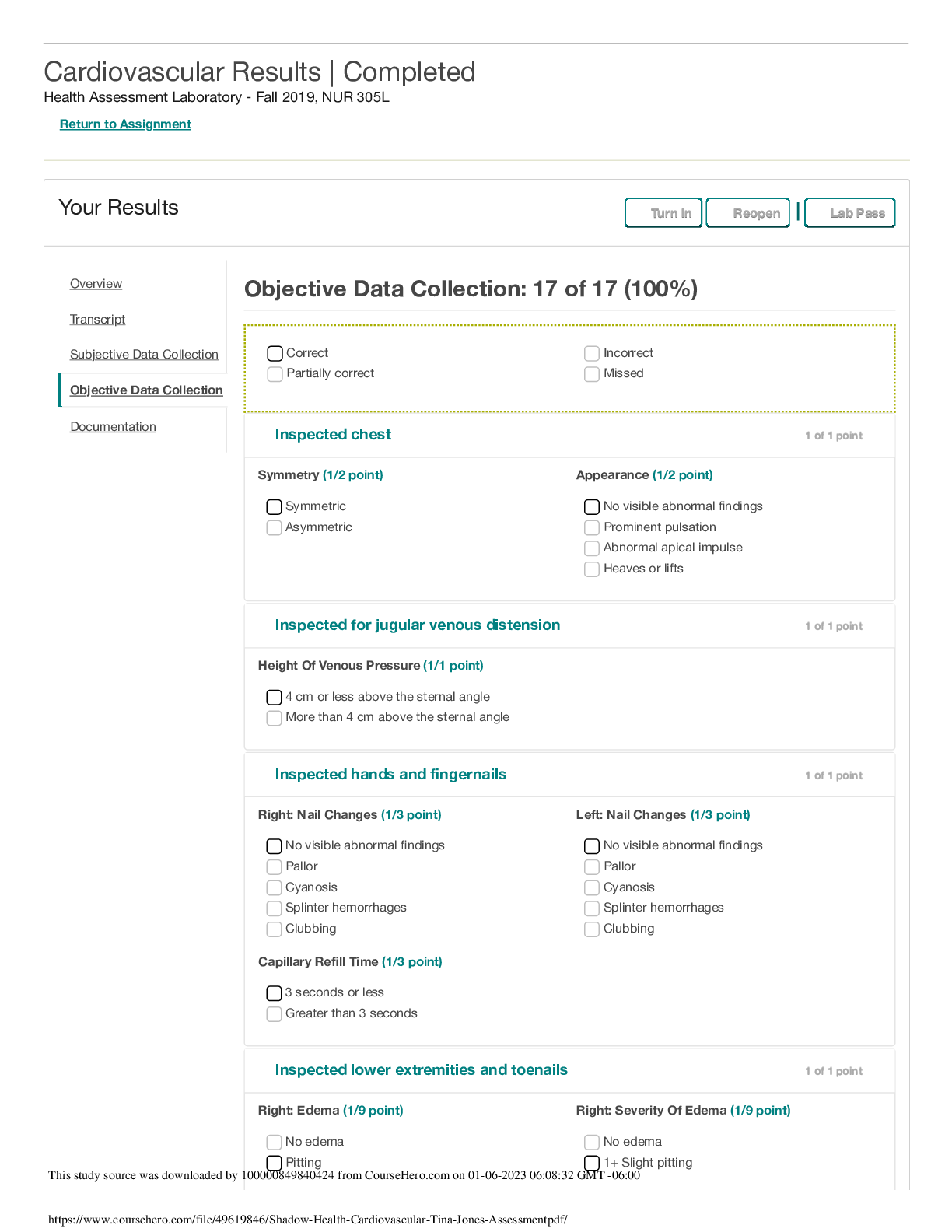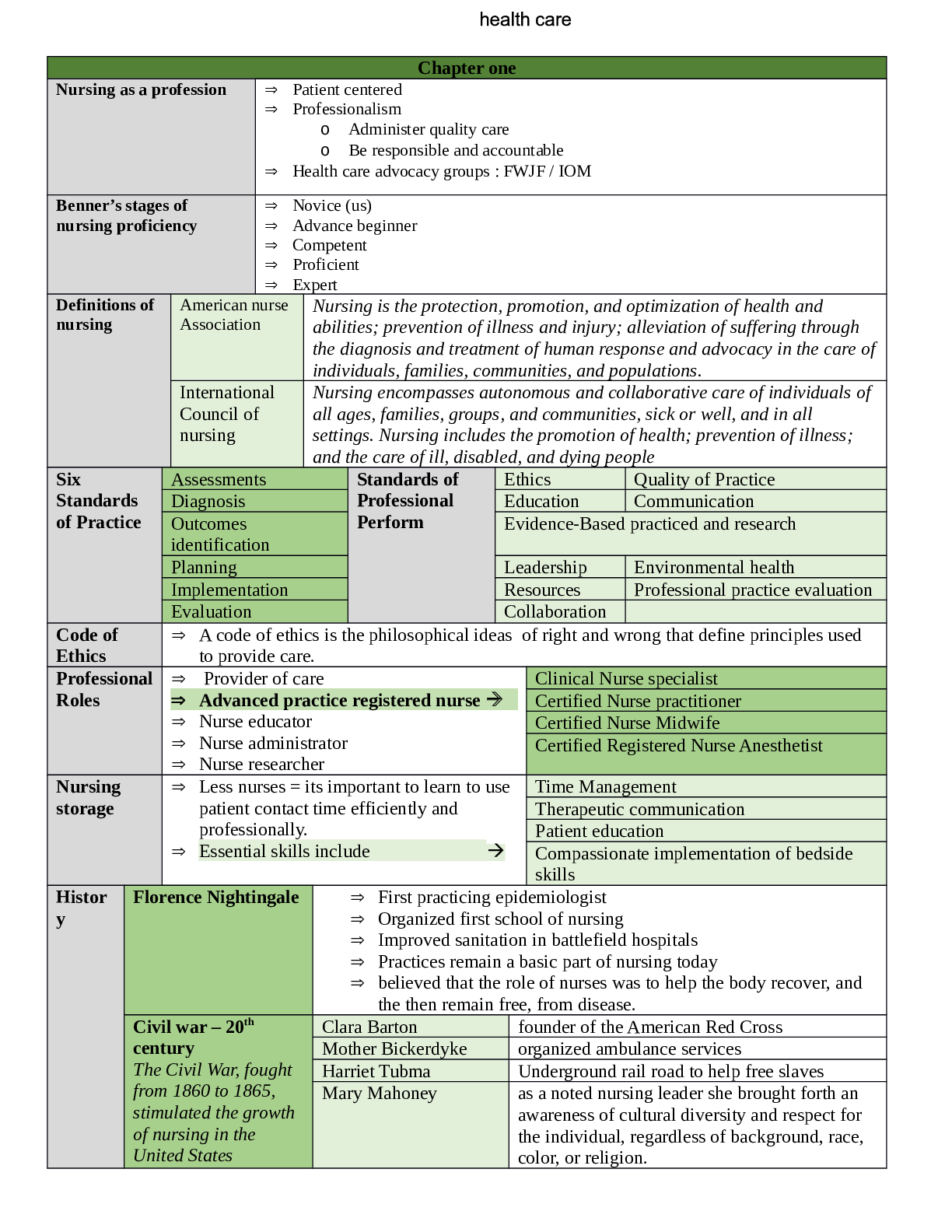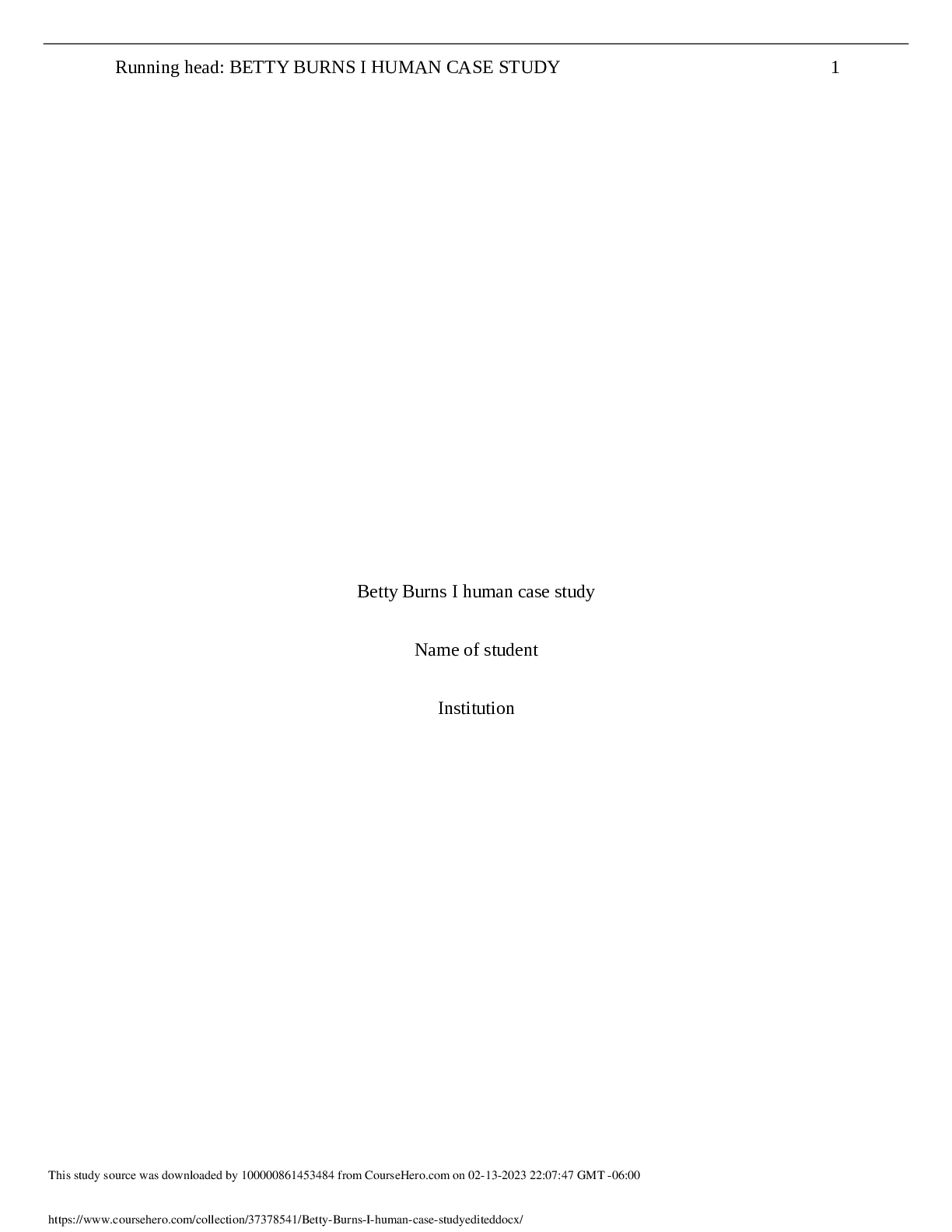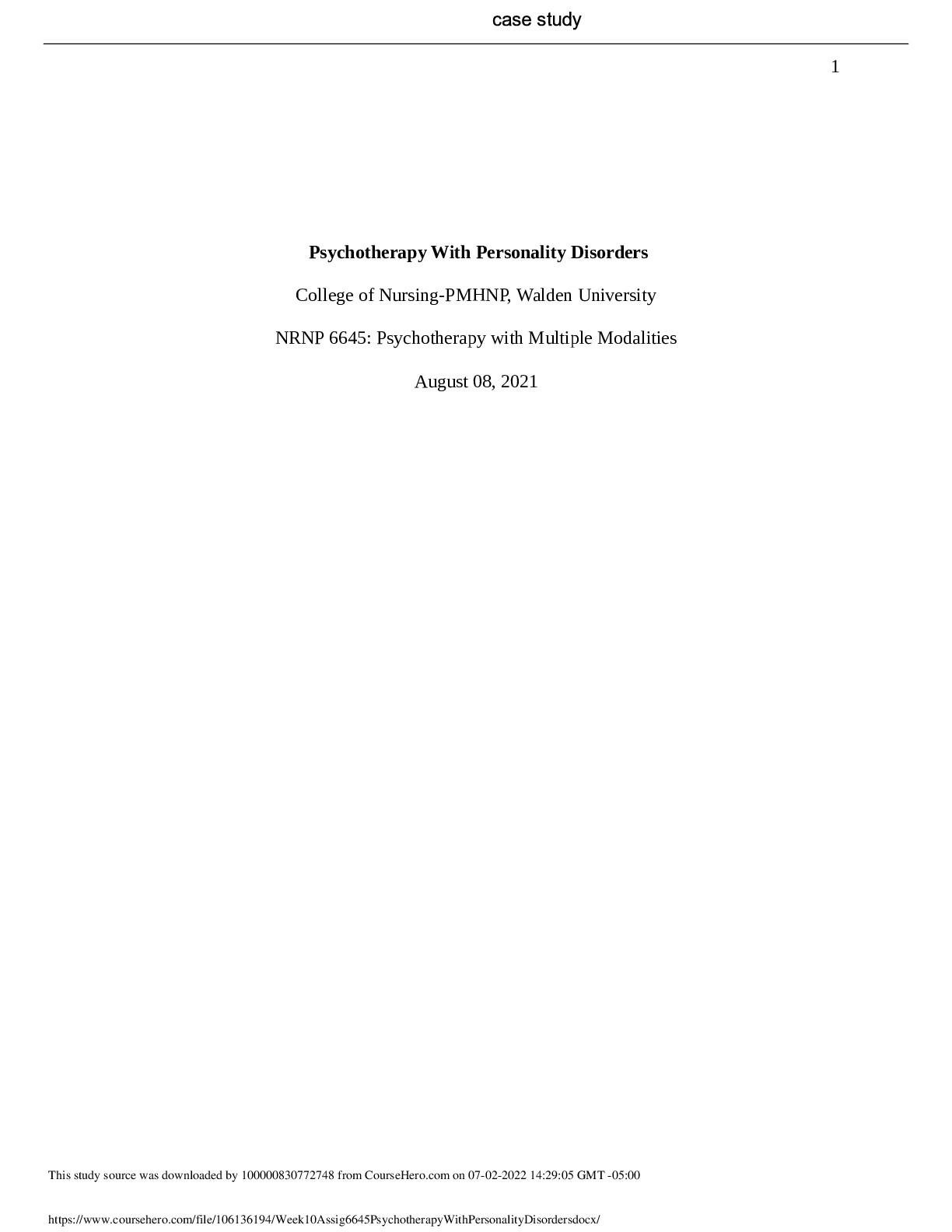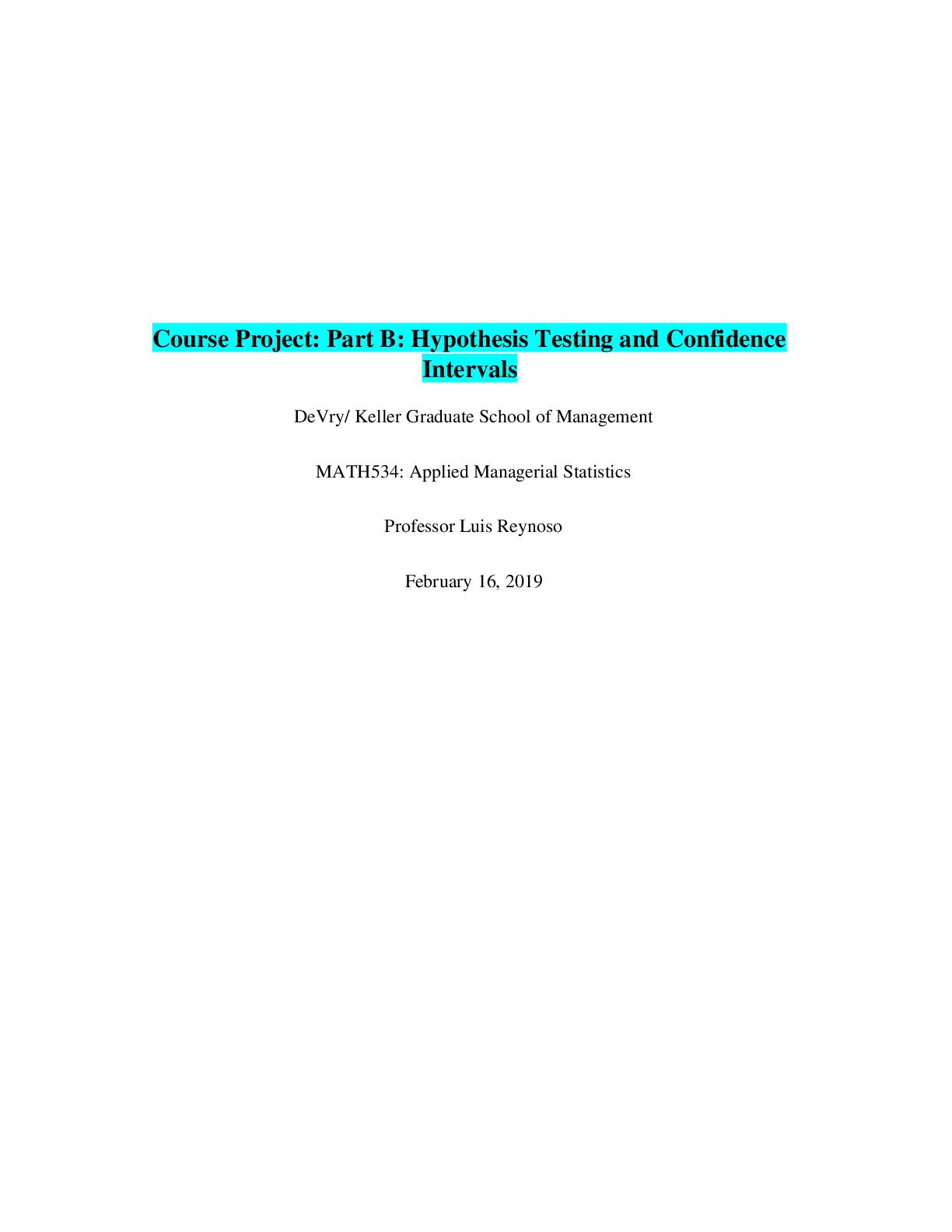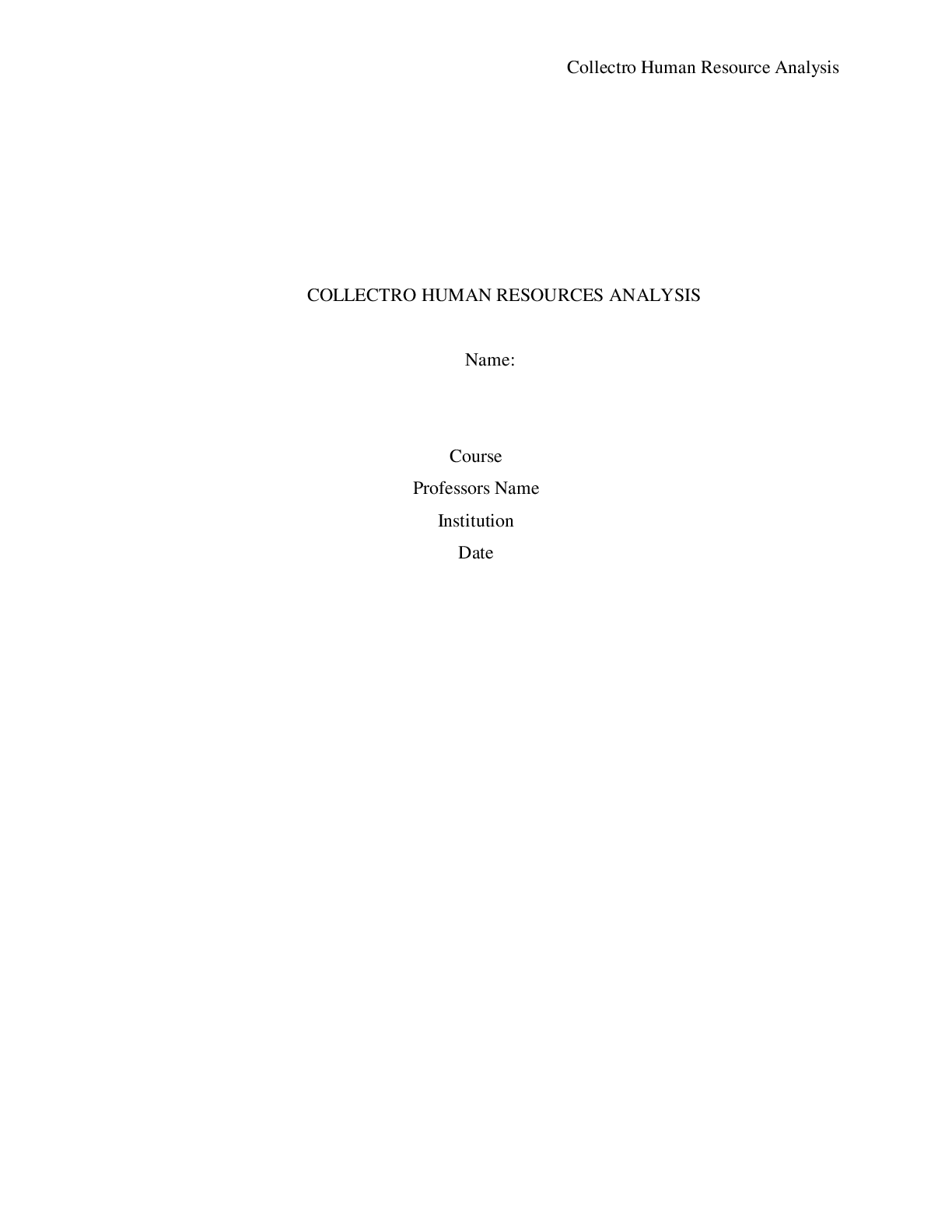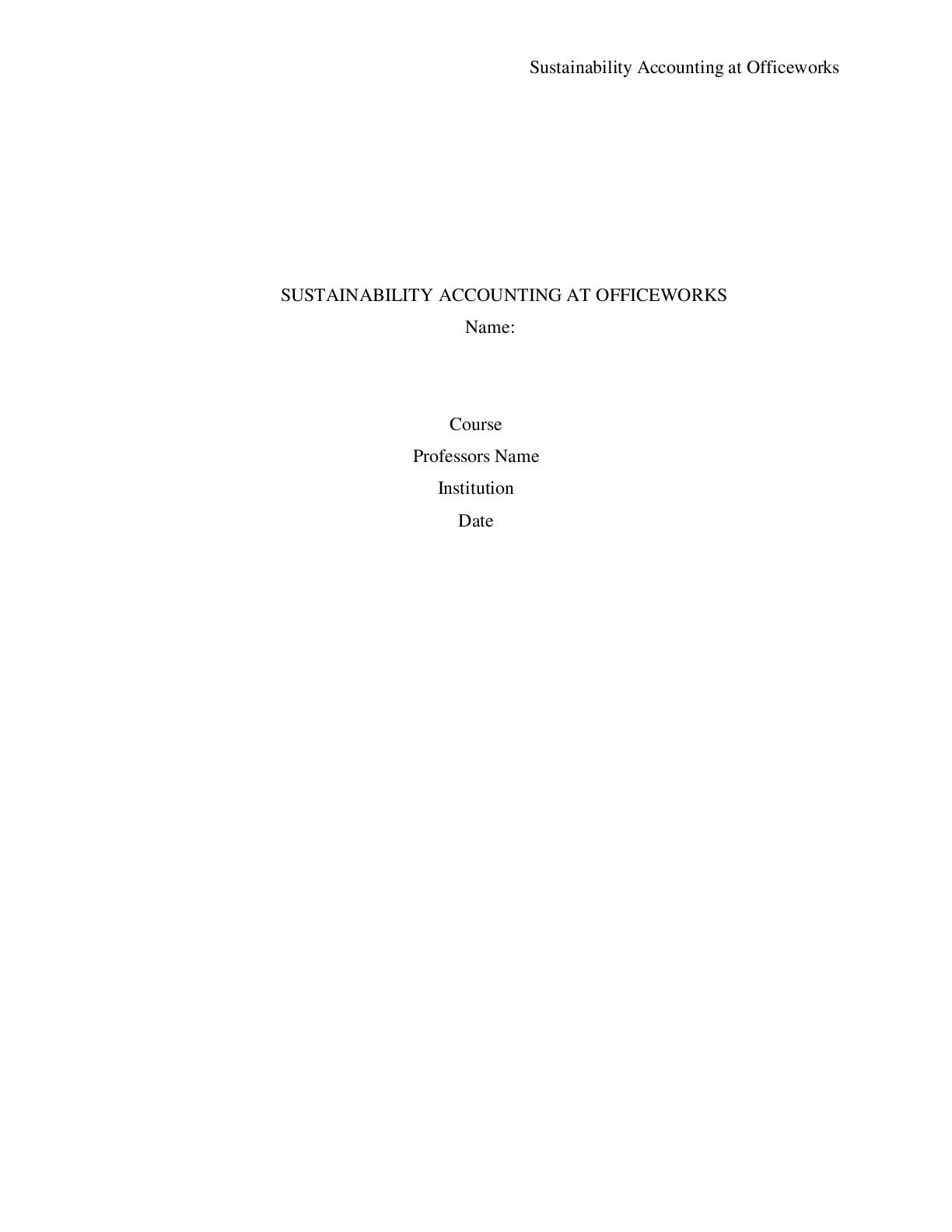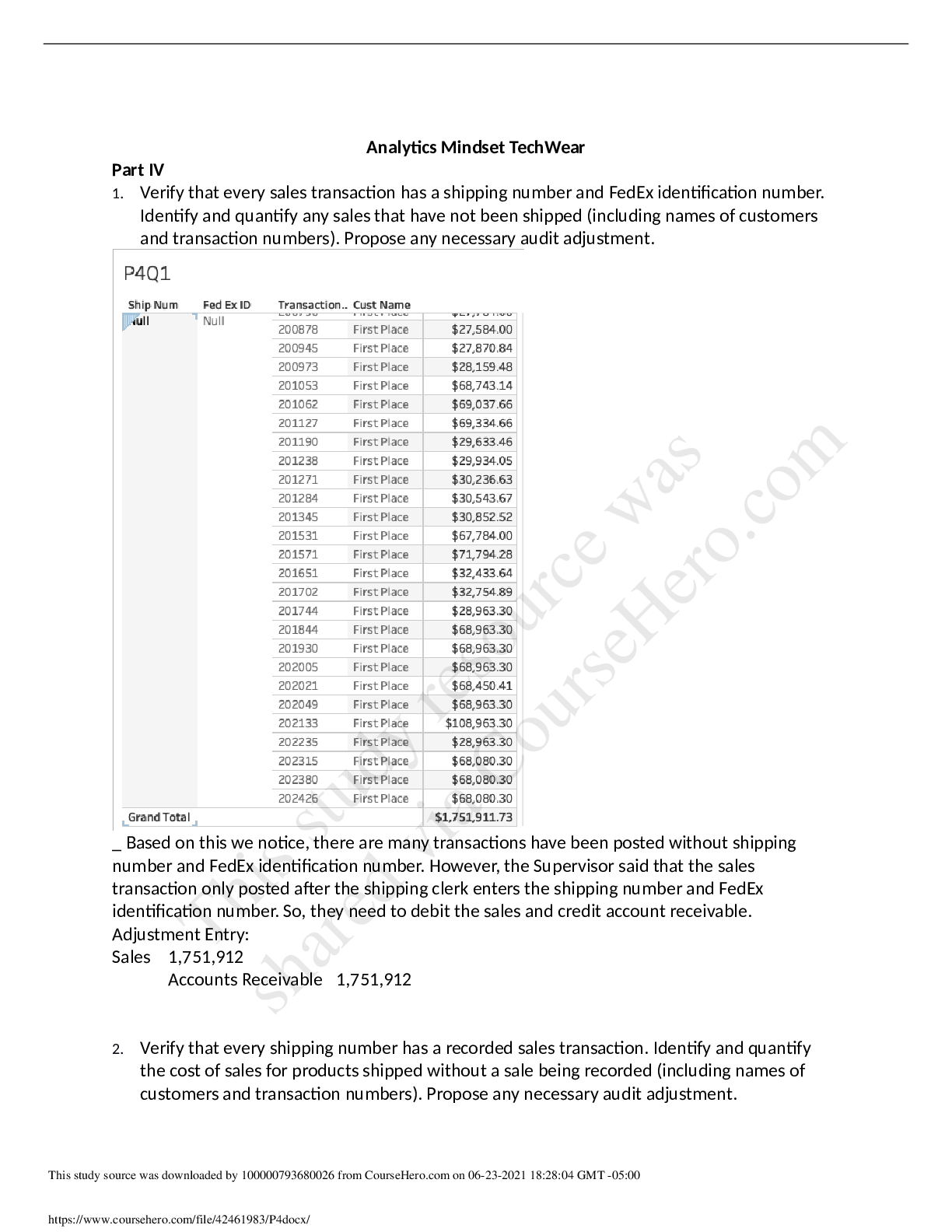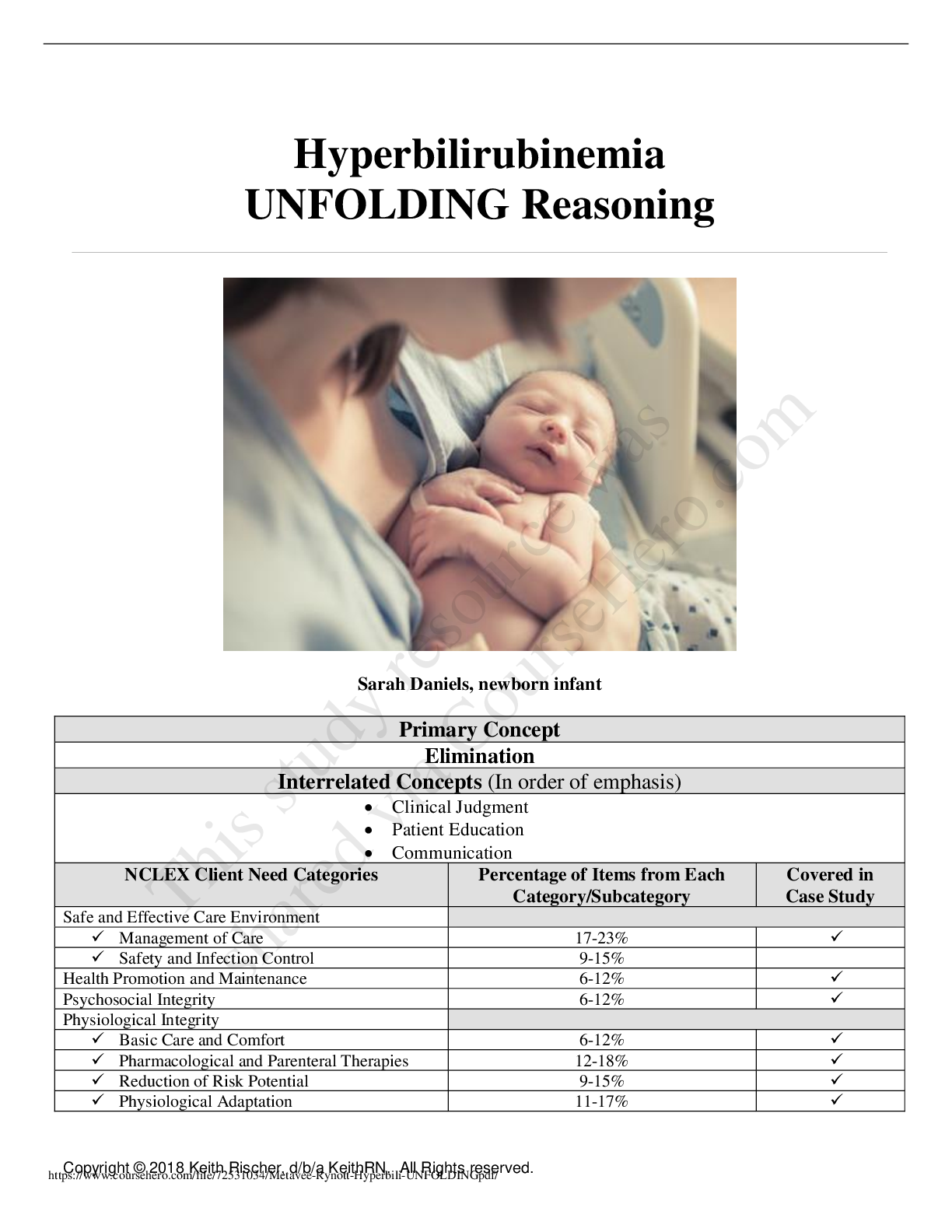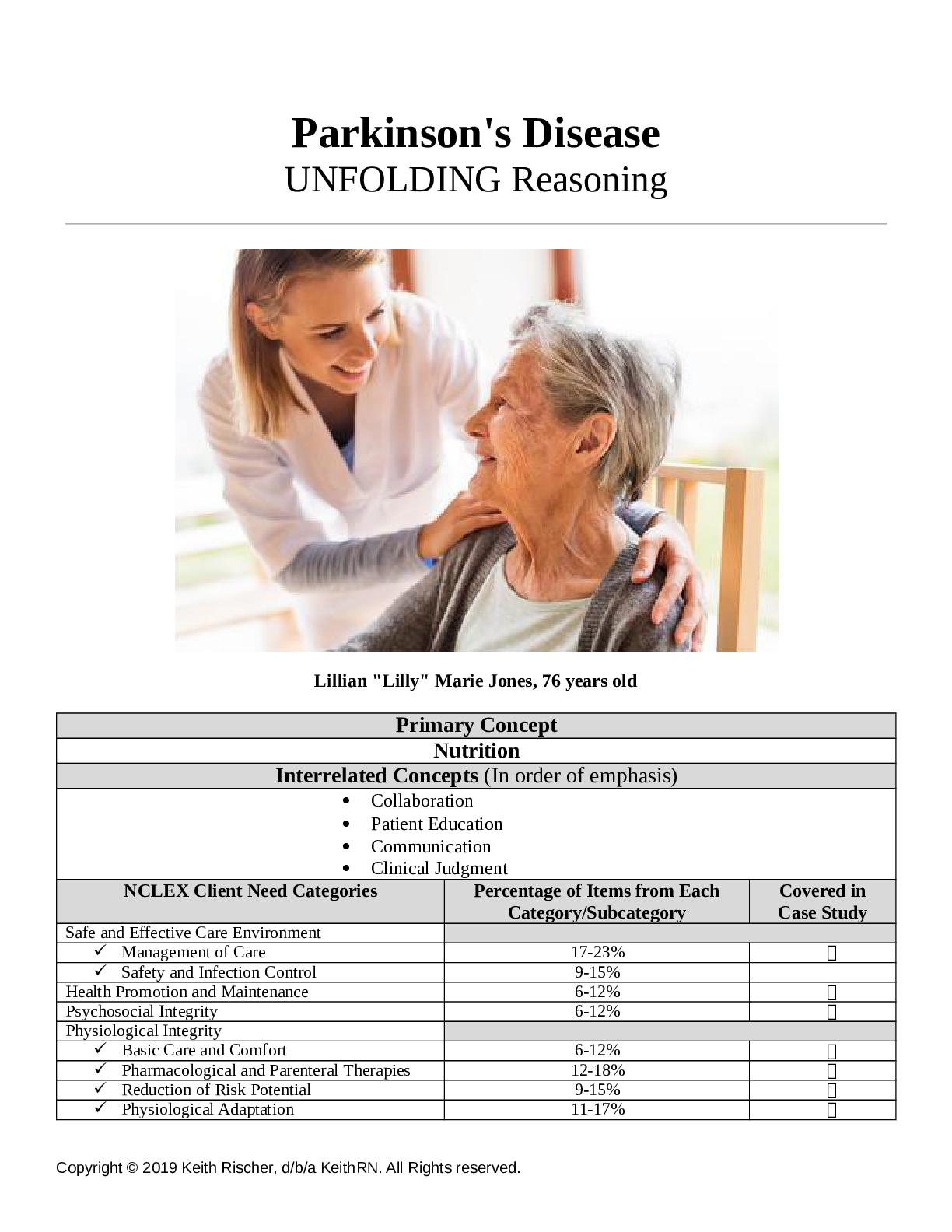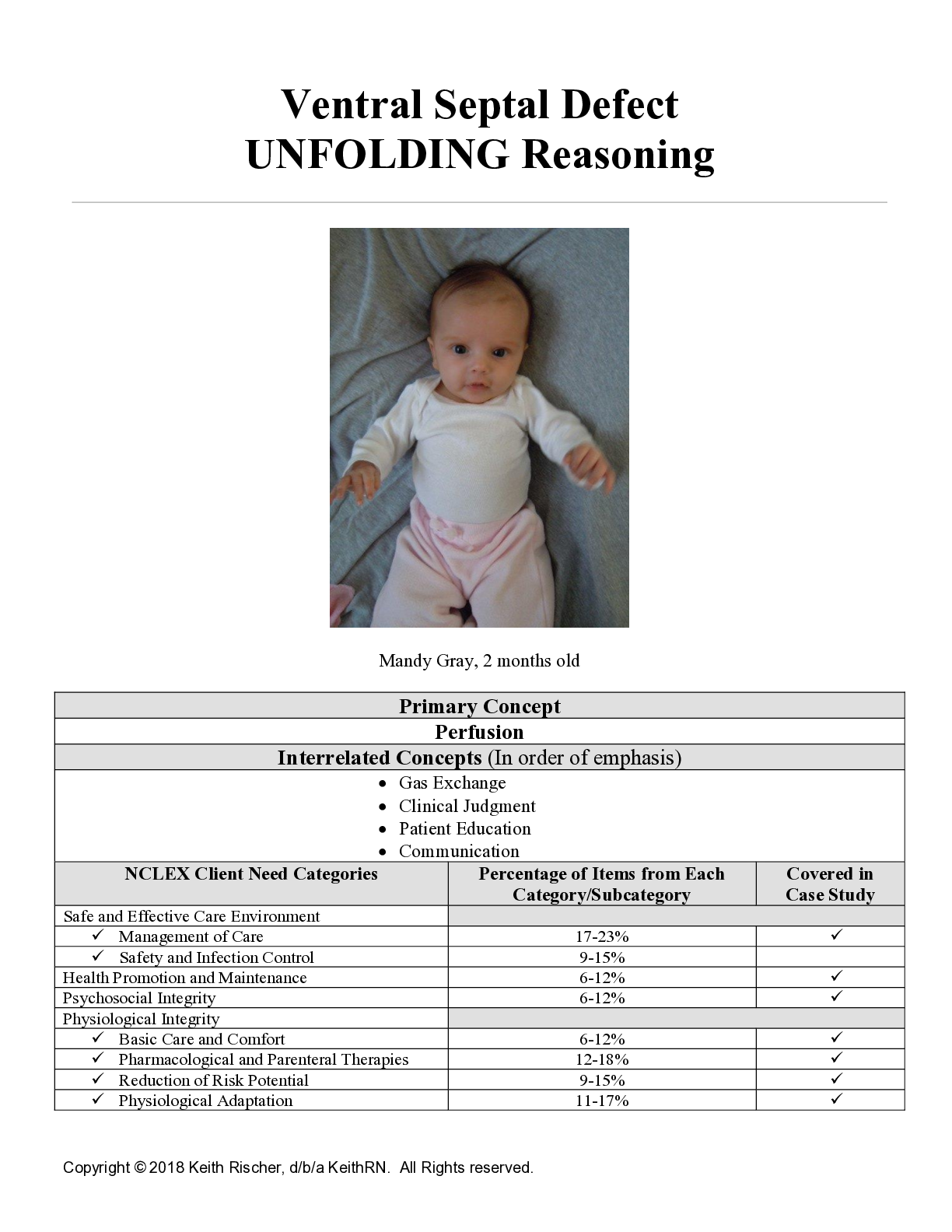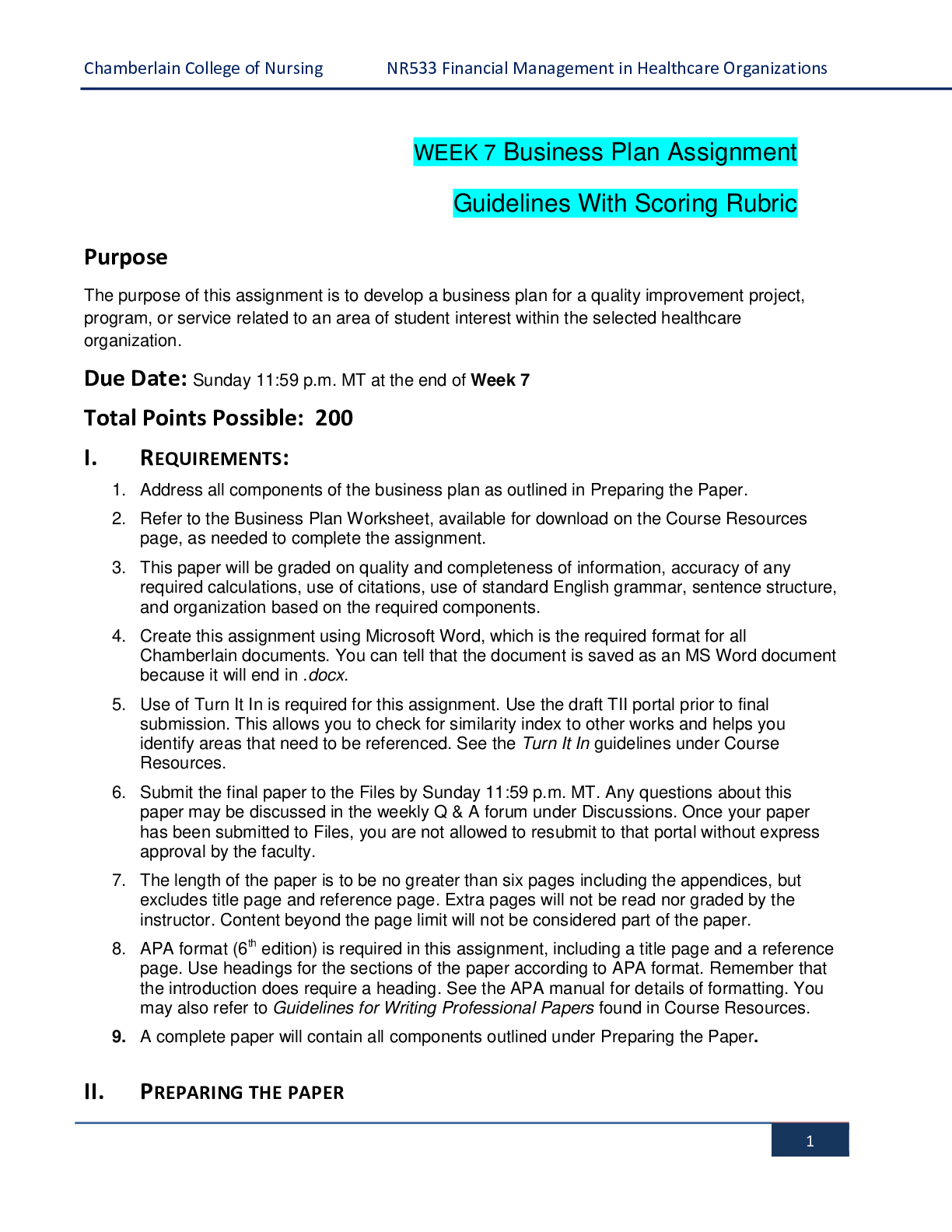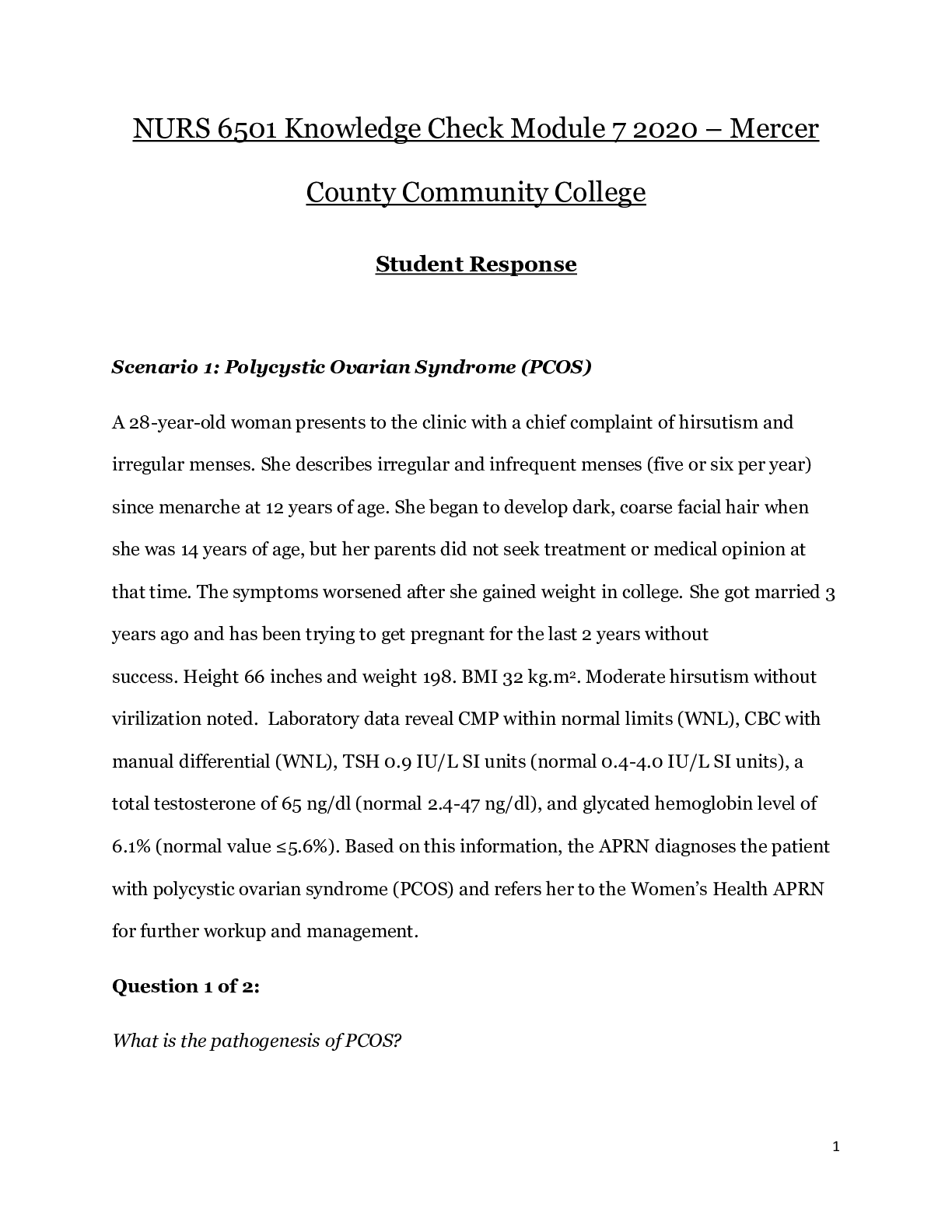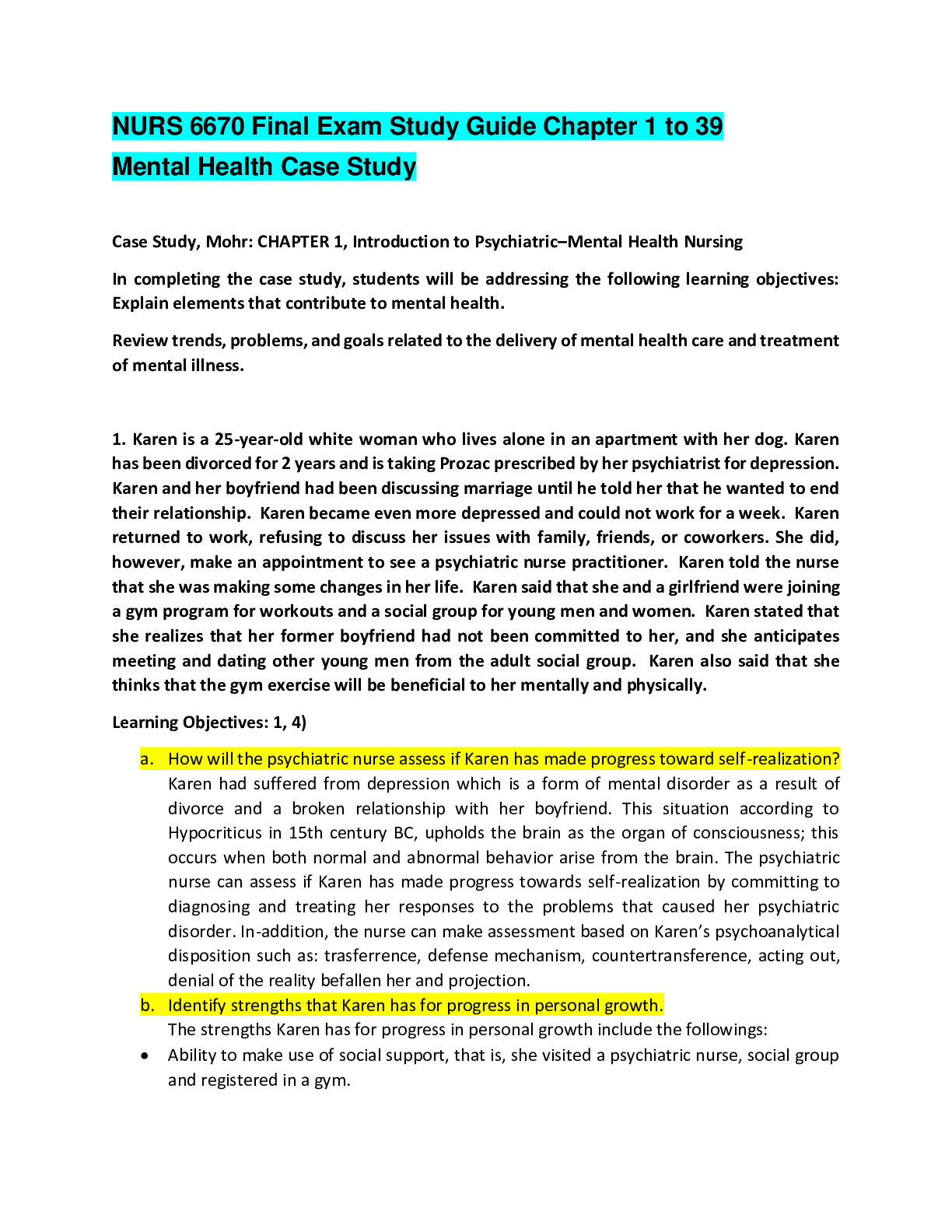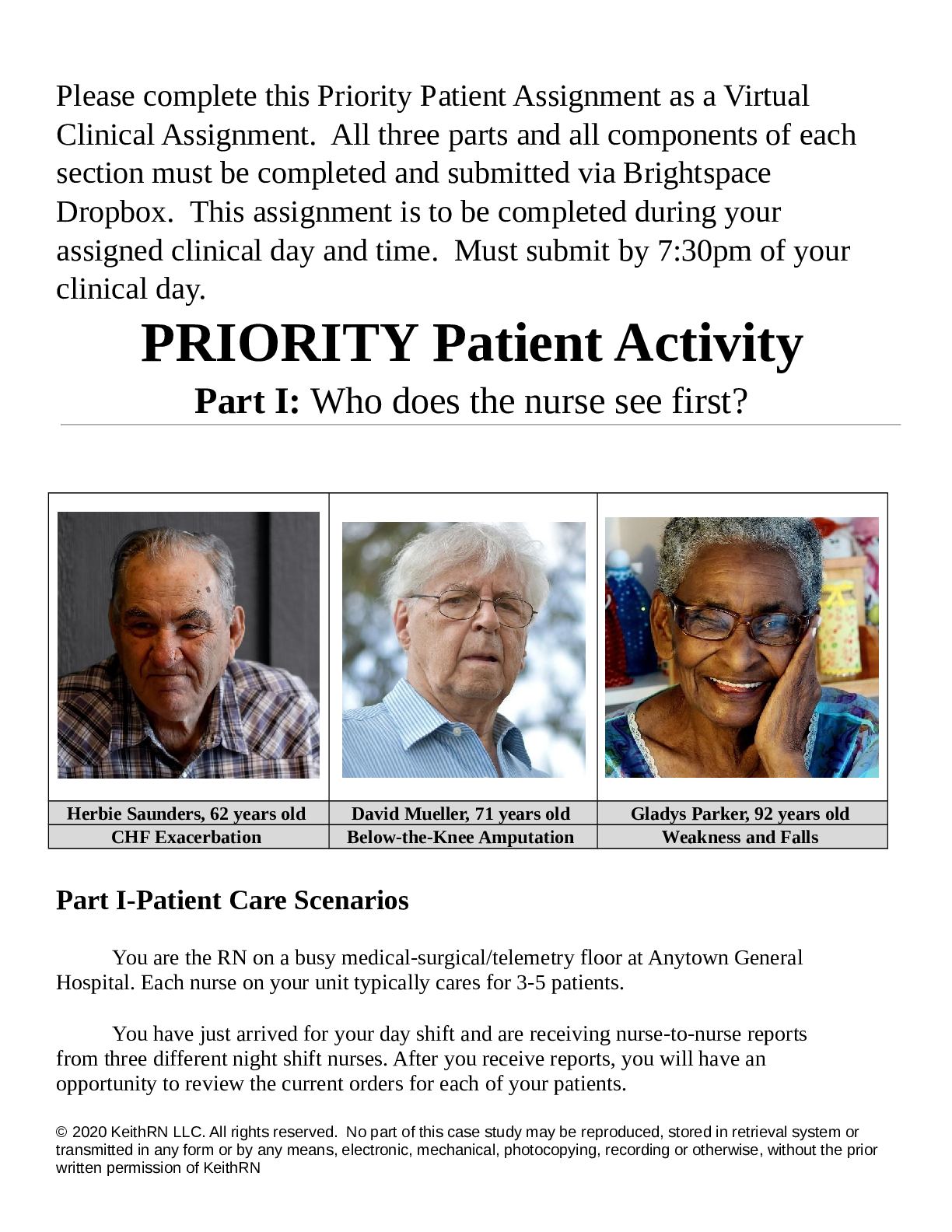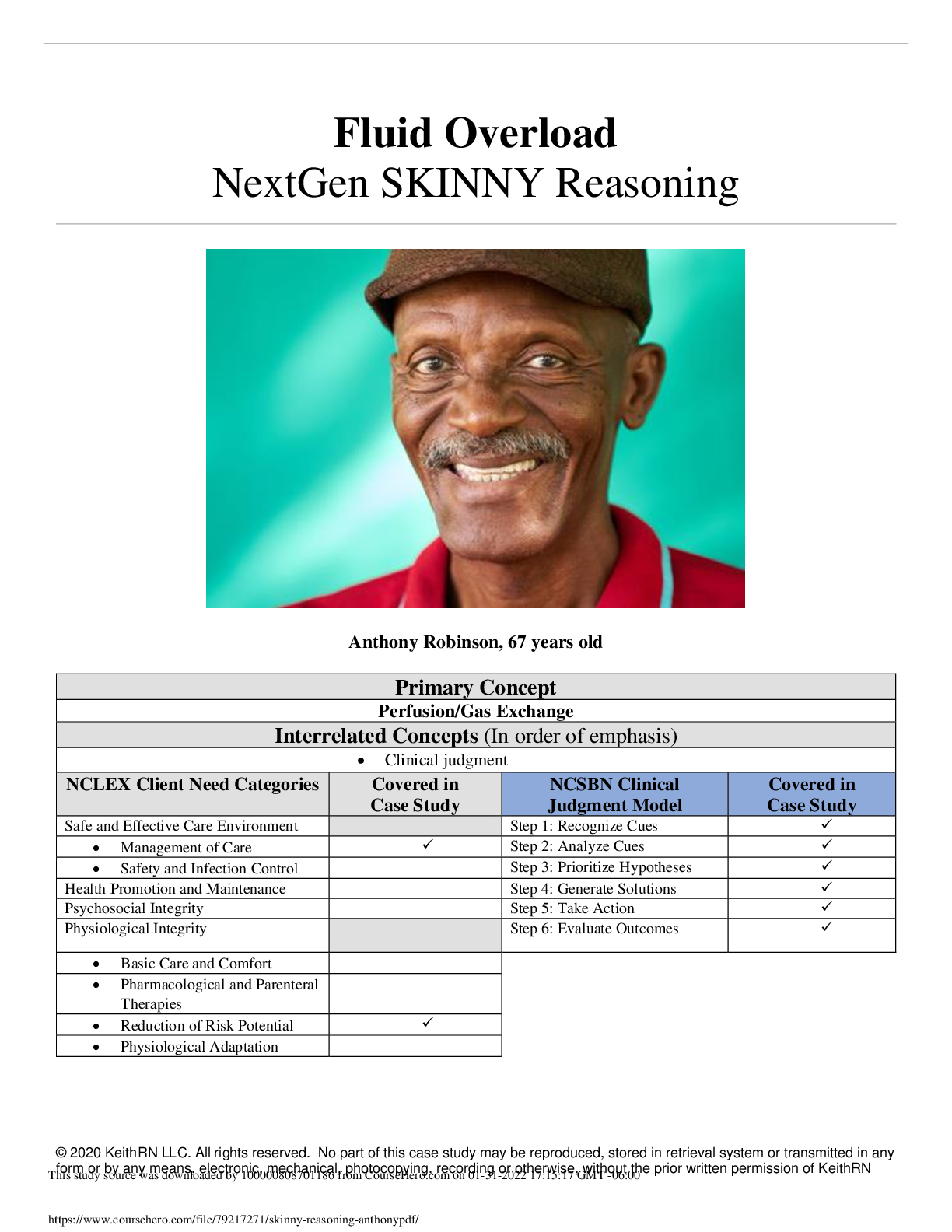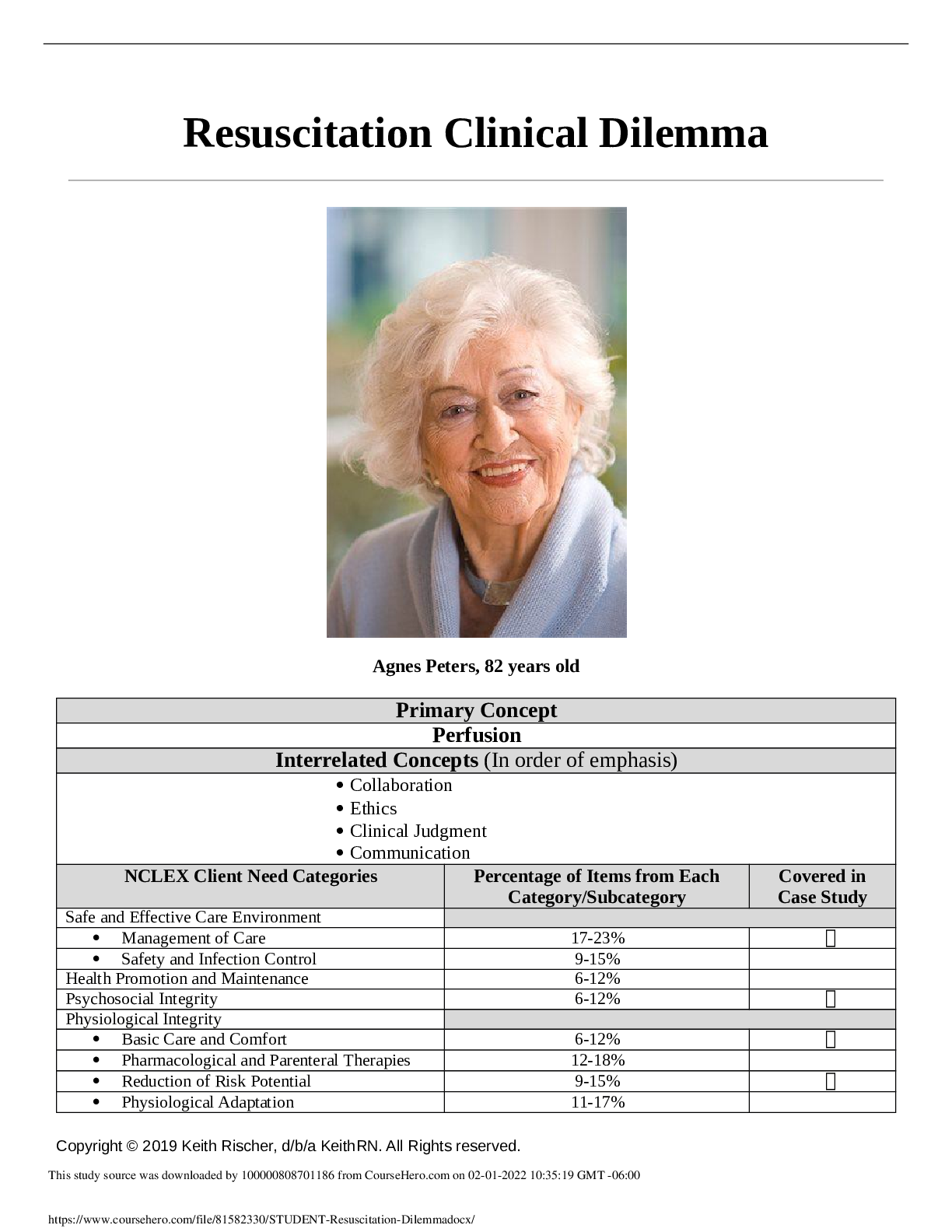Health Care > CASE STUDY > Wk 2 NURS 6051 discussion posts (All)
Wk 2 NURS 6051 discussion posts
Document Content and Description Below
Edmund RE: Discussion - Week 2 COLLAPSE Week 2 N6051 Main post. Analyze the key Functional areas of Nursing Informatics The healthcare system of today is fast changing with the growth and deve... lopment in technology. Technology plays a vital role in analyzing, saving, communication, education and enhancing the quality of care delivered to patients. Nursing informatics is huge and therefore has been divided into several different branches. The “status quo” use of paper documentation is fast disappearing and 21st-century nurses are expected to be computer literate. According to Linda (2015), nursing informatics is “the specialty that integrates nursing science with multiple information management and analytical sciences to identify, define, manage, and communicate data, information, knowledge, and wisdom in nursing practice”. Therefore, nursing informatics was created to support nurses to improve the quality of care and to fully integrate the entire healthcare system to achieve desired outcomes. A key role I played in my previous organization was information management. I actively participated in monitoring sensitive patient information, storage, retrieving, and delivery of information to the appropriate destinations. I was able to accomplish my role because I participated in planning, structure, assessing and processing, evaluating and reporting of information or findings in a timely manner to achieve specific objectives. The 21st-century nurses according to the TIGER initiative (2009), need computer skills that fit their role. Three major areas are identified, basic computer competencies, information literacy competencies, and information management competencies. The role I play today in my organization requires me to have knowledge in basic computer competencies. The TIGER initiative also recommends the European Computer Driving License (ECDL) for all nurses. I can perform all the skills in module 1 of the ECDL which include concepts of Information and Communication Technology (ICT), using the Computer and Managing Files, word processing, spreadsheets, using databases, presentation, web browsing, and communication. My organization requires all nurses to have these basic computer skills as preliminary for hiring. There are training classes for these skills to help nurses improve the quality of care in my organization. Nurses are expected to have learned these skills prior to being hired. For information literacy competencies, I can identify information needed for a specific purpose, locate it and apply it correctly too. For information management competencies, I can collect, and process data that can be used to improve patient safety and quality of care. According to laureate (2012d), nurses must be willing to embrace learning and be challenged to learn something new. Nursing informatics is a new culture that all nurses must embrace because it is efficient. How information technology skills can improve nursing practice and my personal role in my organization Information technology skills can improve nursing care in many ways. It saves time because information can easily be retrieved without spending too much time going over paper charts. It makes locating and collaboration with other nurses and healthcare experts easier. Updated charts are within reach for nurses. This system helps to improve patients’ safety by reducing medical errors and prevents unauthorized people from accessing patient information like was the case on paper charts. Accuracy in documentation, safety, and efficiency are all improved. Information technology also allows nurses to spend more time on direct care. Information technology can improve my role in my organization by giving me quick access to patient information, being able to communicate and exchange ideas with the interdisciplinary team as well as using evidence-based practice retrieved. According to Wakefield (2008) in the quality chasm series, the most significant barrier to improving patient safety identified in "To Err Is Human" is a “lack of awareness of the extent to which errors occur daily in all health care settings and organizations. Information technology helps to reduced or identify possible errors. This can greatly assist me to perform my role in my organization. References Linda, H. (2015). American Nurses Association Releases New Scope and Standards of Nursing Informatics Practice. AACN Advanced Critical Care, (2), 93. Laureate Education (Producer). (2012d). Health information technology competencies. Baltimore, MD: Author. The TIGER initiative (2009) Informatics competencies for every practice nurse; Recommendation from the TIGER collaborative. Retrieved from: https://web.archive.org/web/20150323183938/http://thetigerinitiative.org/docs/TigerReport_Informati csCompetencies_001.pdf Wakefield, M. K (2008). The Quality chasm series: implications for nursing in R.G Hughes(Ed), Patient safety and Quality. An Evidence-Based Handbook for Nurses (Vol. 1, pp47-66). Rockville, MD: US Department of Health and human Services: Retrieved from: https://www.ncbi.nlm.nih.gov/NBK2677/ Discussion post 1 Hello Edmund, I enjoyed your post and agree with how technology development can assist in nurses’ patient care in the health care system. There is already the importance of nurses entering the work field to be computer literate or basic knowledge to increase their skills in the work field. Providing adequate education, knowledge, and innovation for nurses to use once they enter the work place is vital as technology will continue to be a fundamental part of nursing informatics and delivery care models of the next decade (Risling, 2017). Completing research, like IMIA NISIG Student Group in 2015 through an international survey for build on the next step as a country as well as healthcare organizations in nursing informatics (Ronquillo, 2016)., Continuing research and identifying needs will be crucial to advance nursing informatics research, practice, education, collaboration, and visibility in the health care system. (Ronquillo, 2016). Nursing educators will be expected to prepare students teaching with and about interventions about technology to improve patient care outcomes (Risling, 2017). Expansions in nursing informatics that could be expected and yet unimained in healthcare technology innovations in the next ten years could be astounding. For example, nurses could potentially expect to have wearable devices for nursing practice and assessment tools for patient care (Risling, 2017). Nurses could expect to have to analyze data such as heart rate, blood pressure, or other interventions provided by technological advances in healthcare; quickly and accurately analyzing the information, while communicating the information to physicians for more efficient patient treatment. [Show More]
Last updated: 1 year ago
Preview 1 out of 16 pages

Reviews( 0 )
Document information
Connected school, study & course
About the document
Uploaded On
Jul 05, 2022
Number of pages
16
Written in
Additional information
This document has been written for:
Uploaded
Jul 05, 2022
Downloads
0
Views
122

